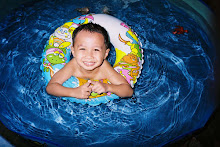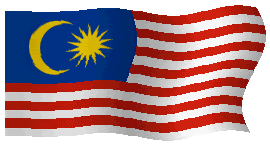 As a team was working on better ways to detect hazardous gases on the shuttle launch pad, they found out they also could build something to find hazardous gases venting from a volcano.
As a team was working on better ways to detect hazardous gases on the shuttle launch pad, they found out they also could build something to find hazardous gases venting from a volcano.

Tim Griffin, foreground, and designer Richard Arkin miniaturized the leak detector system used by the space shuttle and then found out it could be used for volcano studies. Working with Costa Rican officials, the mobile detector has been used to find out what gases volcanoes give off and how much. With enough information, the detectors are expected to be able to predict a volcanic eruption in time to allow safe evacuations of nearby areas. Photo credit: NASA/Amanda Diller› View Hi-Res Image The mobile leak detector was placed inside a small aircraft and flown over the Turrialba volcano to gauge the air around the volcano. In this photo, the sampling device is attached to the wing strut and positioned so it doesn't pick up exhaust gases. Photo courtesy of Tim Griffin› View Hi-Res Image
The mobile leak detector was placed inside a small aircraft and flown over the Turrialba volcano to gauge the air around the volcano. In this photo, the sampling device is attached to the wing strut and positioned so it doesn't pick up exhaust gases. Photo courtesy of Tim Griffin› View Hi-Res Image

Tim Griffin and his team of researchers carried the leak detector by hand into the cone of the Turrialba volcano in Costa Rica in 2005. Photo courtesy of Tim Griffin› View Hi-Res Image

Tim Griffin works with the mobile leak detector in the back seat of a Costa Rican airplane before a sampling fllight. The shuttle leak detection system used at the launch pads is the size of three refrigerators, but Griffin's team reduced it in size and added automation so it could be mobile.Photo courtesy of Tim Griffin. › View Hi-Res Image
ABOUT AMATEUR RADIO
Amateur radio service is defined in the Communication and Multimedia (Spectrum) Regulations 2000 as a radiocommunications service (covering both terrestrial and satellite) in which a station is used for the purpose of self traning, intercommunication and technical investigations carried out by authorized persons who are interested in radio technique solely with a personal aim and without any pecuniary interest.
AMATEUR RADIO OPERATOR'S CERTIFICATE
Regulation 27(1) of the Communications and Multimedia (Technical Standards) Regulations 2000 states that no person shall undertake or conduct any activity in designated skil area unless that person is certified. Amateur radio operator has been gazetted as a designated skill area category under the regulation, hence to operate an amateur radio station a person needs to have an appropriate proficiency and skill i.e. certified in this area.
INTERFERENCE
Please ensure that the radio transmision does not cause interference to any other radio services. Regulation 15(1) of the Communications and Multemedia (Technical Standards) Regulations 2000 states that no person shall intentionally design, install, operate, maintain or modify any communications equipment in a manner is likely to cause interference with, impairment, mulfunction of, or harm to any communications equipment or any other equipment.
Regulation 15(2) of the regulation denotes that a person who contravenes this regulation commits an offence and shall, on conviction, be liable to a fine not exceeding three hundred thousand ringgit (RM 300,000.00) or to imprisonment for a term of not exceeding three years or to both.
To eliminate the potential of interferences, the following procedures must be followed strictly:-
a) Ensure that suffient equipment, tools and test gear is available and can used to monitor and verify that your transmission does not cause any interference to other radio services.
b) You must responsible if your amateur radio is found to be the caused of interference. Immediate remedy action must be taken to rectify the problems in case of interference.
c) Ensure that the transmission do not exceed the level of over deviation.
d) Ensure that the radiated energy is always within the narrowest posible frequency bands for any class of emission in use.
e) The radiation of harmonics and spurious emissions should be suppressed to minimize interference.
Historical Description of Amateur Radio: From the Encyclopedia Britannica:-
Interest in amateur radio arose around the turn of the century, shortly after the Italian inventor Guglielmo Marconi successfully sent the first transatlantic wireless signal in 1901. The interference of amateur broadcasts with commercial and military transmissions led to the institution of government control in 1911. After World War I, amateurs became active in radio experimentation, contributing to developments in long-distance broadcasting and becoming the first radio operators successfully to exploit the upper medium-frequency and lower high-frequency radio bands. Over the years, amateur radio operators have also provided emergency communications during forest fires, floods, hurricanes, and other disasters. They serve as an important link between stricken communities and the outside world until normal communications are reestablished.Amateur radio operators in the United States are subject to international and federal regulations. There are five classes of licenses. Competence in the use of the International Morse Code and a knowledge of radio theory and regulation are required to obtain the advanced-level licenses. Amateur radio is allocated frequencies at the extreme high-frequency end of the medium-wave band, five groups of frequencies in the shortwave band, two groups in the veryhigh-frequency band, three in the ultrahigh-frequency band, and seven in the superhigh-frequency band for telegraphic and telephonic communication using amplitude and frequency modulation. There are restrictions on the power of the transmitters, and certain of the frequencies must be shared with due regard for the needs of other users.
 As a team was working on better ways to detect hazardous gases on the shuttle launch pad, they found out they also could build something to find hazardous gases venting from a volcano.
As a team was working on better ways to detect hazardous gases on the shuttle launch pad, they found out they also could build something to find hazardous gases venting from a volcano.
 The mobile leak detector was placed inside a small aircraft and flown over the Turrialba volcano to gauge the air around the volcano. In this photo, the sampling device is attached to the wing strut and positioned so it doesn't pick up exhaust gases. Photo courtesy of Tim Griffin› View Hi-Res Image
The mobile leak detector was placed inside a small aircraft and flown over the Turrialba volcano to gauge the air around the volcano. In this photo, the sampling device is attached to the wing strut and positioned so it doesn't pick up exhaust gases. Photo courtesy of Tim Griffin› View Hi-Res Image 
























































0 comments:
Post a Comment